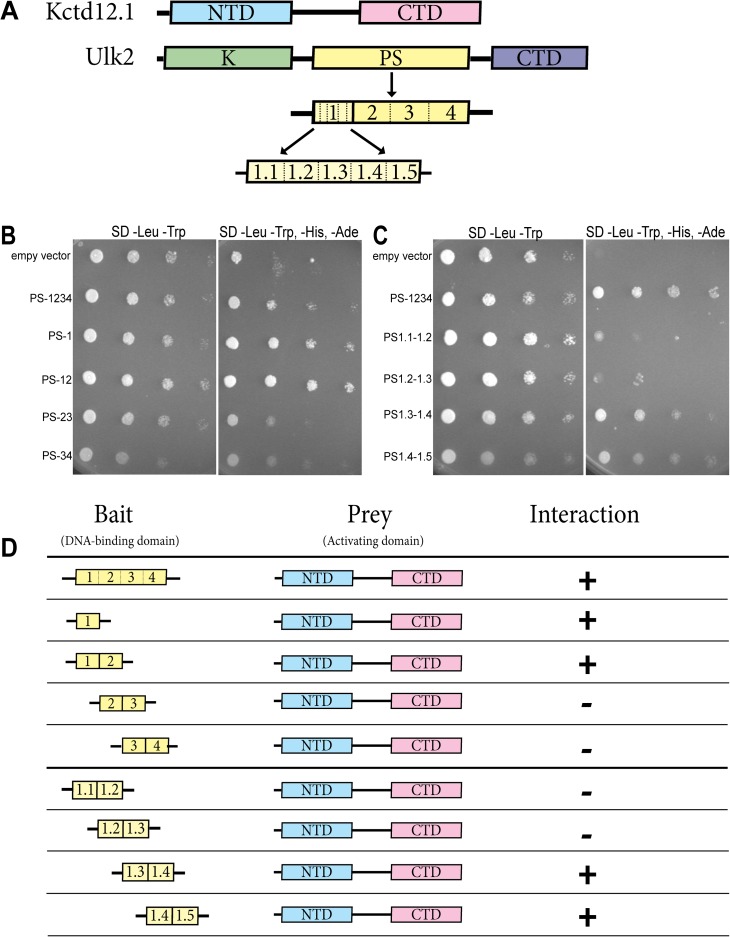The line weights in Fig. 1 are heavier than intended. The publisher apologizes for the error. Please see the correct Fig. 1 here.
Figure 1. Kctd12.1 interacts with a subset of amino acids in the PS domain of Ulk2.
Transformants expressing a fragment of the PS domain of Ulk2 fused to the Gal4 DNA-binding domain were mated with transformants expressing Kctd12.1 fused to the Gal4 activation domain. A. Kctd12.1 contains two domains: an N-terminal domain (NTD) that promotes oligomerization, and a C-terminal domain (CTD) of undefined function. Ulk2 contains three domains: an N-terminal serine-threonine kinase domain (K), an internal proline-serine-rich region (PS rich), and a CTD involved in protein–protein interactions. Fragment 1.4 of the Ulk2 PS rich domain is the site of interaction with Kctd12. B. Region 1 of the Ulk2 PS domain is the site of interaction with Kctd12.1. C. PS domain fragments containing region 1.4 (PS1.3–1.4 and PS1.4–1.5) interact most strongly with Kctd12.1, suggesting the site of interaction is PS1.4. D. Summary of the yeast two-hybrid results. Fragment 1.4 of the Ulk2 PS rich domain is the site of interaction with Kctd12.
Reference
- 1. Lee S, Page-McCaw P, Gamse JT (2014) Kctd12 and Ulk2 Partner to Regulate Dendritogenesis and Behavior in the Habenular Nuclei. PLoS ONE 9(10): e110280 doi: 10.1371/journal.pone.0110280 [DOI] [PMC free article] [PubMed] [Google Scholar]



